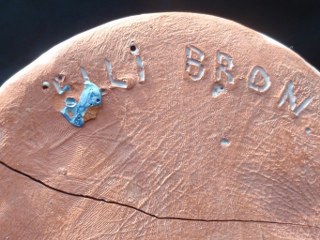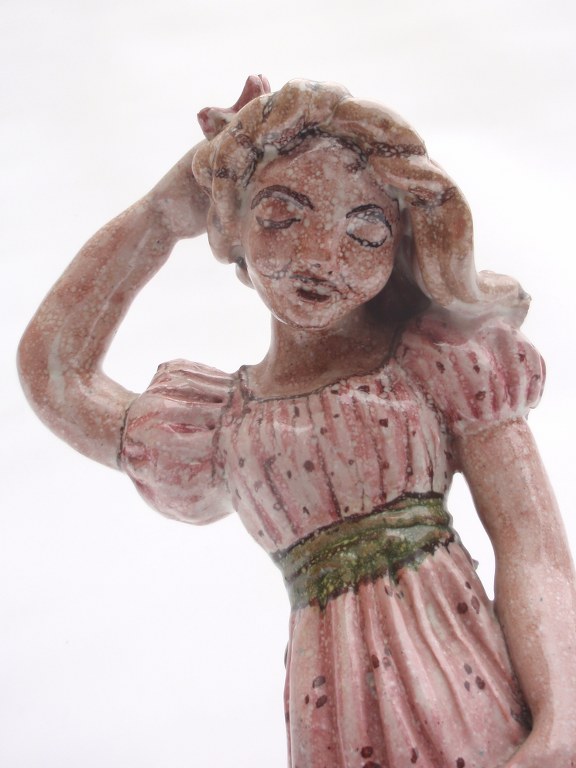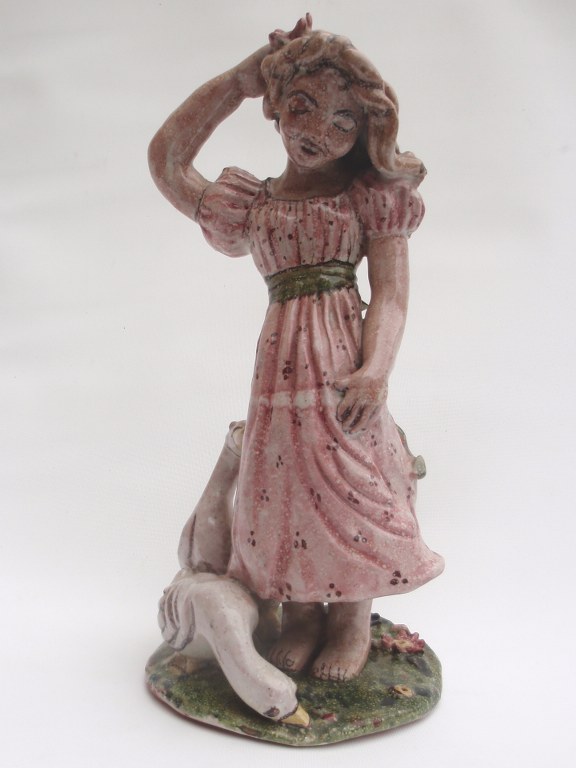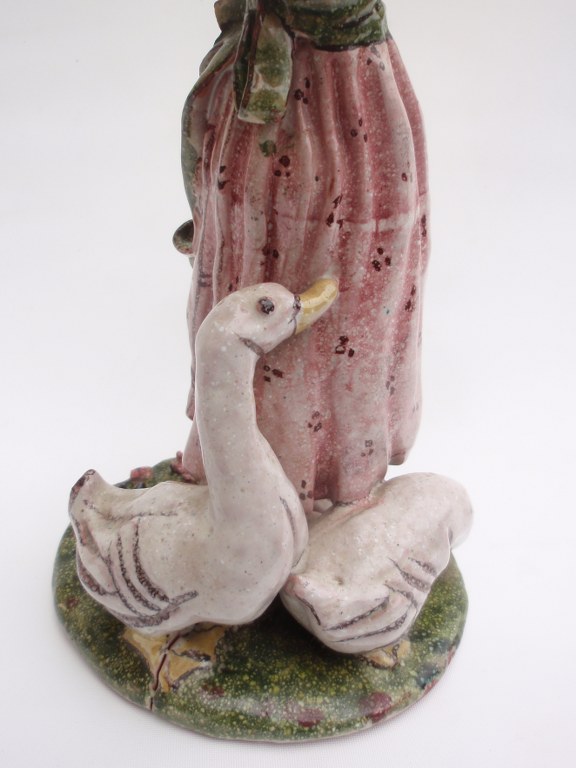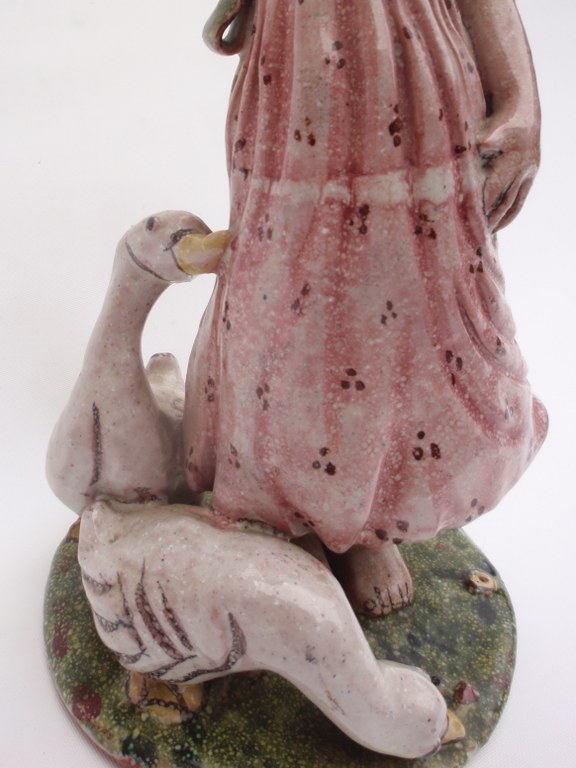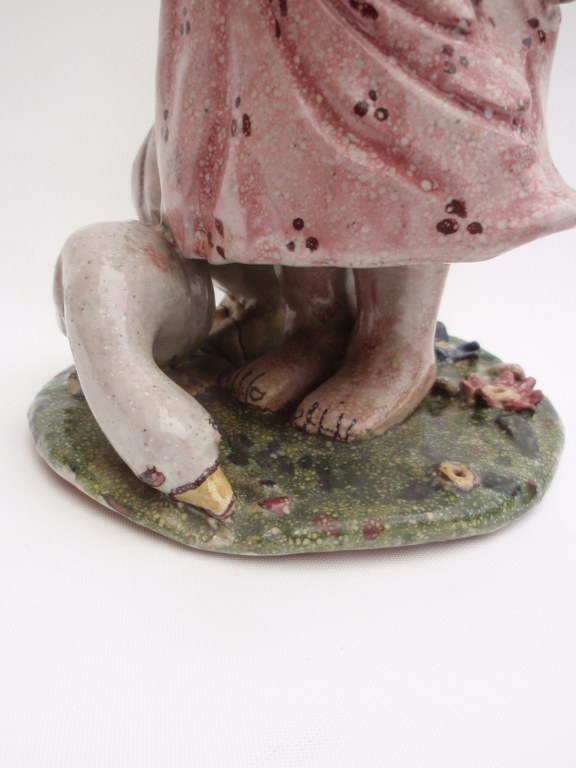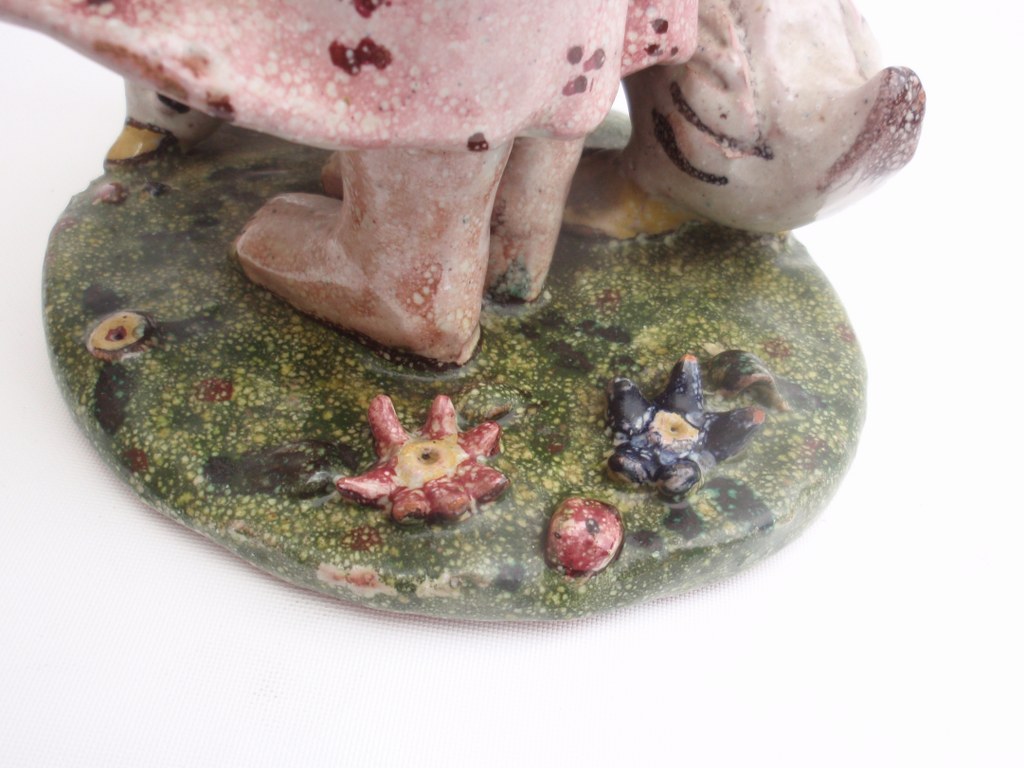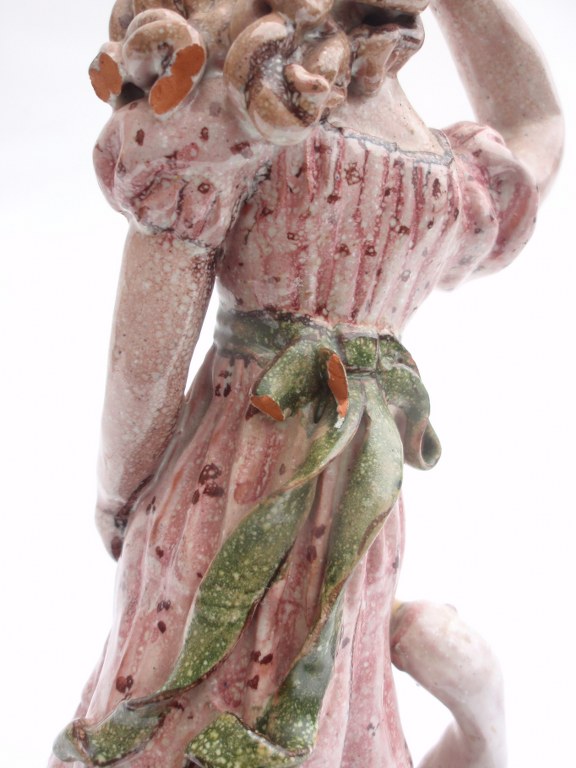Ganzenhoedster door “Elli Bron” in de stijl van de Wiener Werkstätte
De Ganzenhoedster is een sprookje dat is beschreven door de gebroeders Grimm. Het verhaal gaat over een prinses die door een rivale van haar titel wordt beroofd en in plaats van haar met de jonge koning zal gaan trouwen. De prinses wordt gedwongen om de ganzen te hoeden. Uiteindelijk wordt de echte prinses “met haar gouden haren en haar bijzondere nobele karakter” toch de ware bruid van de koning. De oorspong van het sprookje is waarschijnlijk Romeins. Ganzen waren namelijk in de Romeinse tijd de heilige dieren van de Romeinse godin Juno Moneta (“de waarschuwende”), die de (maagdelijke) godin van het huwelijk was. Door de waakzaamheid van haar tempelganzen werd in Rome ooit een aanval van de Galliërs verijdeld.
Het beeld is gesigneerd: “Elli Bron”. Naspeuringen naar deze naam hebben tot dusverre niet veel opgeleverd. Er is wel één ander beeld van haar bekend. Deze zou in 1941 zijn gemaakt. Qua kleuren (glazuren en klei) doet het onderhavige beeld sterk denken aan de beelden van Vally Wieselthier (1895-1945) en de Wiener Werkstätte. Er is wel een Joodse kunstenares bekend met de naam Elli Weingarten (Brno 1884 – Riga 1942)*. Haar geboorteplaats Brno (Tjechië) zou een verklaring voor het gebruik van de achternaam ‘Bron’ kunnen zijn. Weingarten was lid van de ‘Vereinigung bildender Künstlerinnen Österreichs, waar destijds veel jodinnen lid van waren. In Riga (Estland) zat tot en met 1943 een berucht Joods ghetto. In de voetplaat van het beeld zit een grote bakscheur. Aan de achterzijde zijn wat beschadigingen. Hoogte circa 24 cm. Prijs op aanvraag.
*Ben-Eli, Birgit. “Austria: Jewish Women Artists.” Jewish Women: A Comprehensive Historical Encyclopedia. 1 March 2009. Jewish Women’s Archive. http://jwa.org/encyclopedia/article/austria-jewish-women-artists
Goose girl by “Elli Bron” in the manner of the Wiener Werkstätte
The goose girl is a fairy tale that is described by the Brothers Grimm. The story is about a princess who is robbed by a rival of her title and instead of her with the young King will get married. The princess is forced to become a goose girl. Eventually, the real princess “with her golden hair and her particular noble character” became the true bride of the King. The origin of the fairy tale is probably Roman. Geese were in Roman times the sacred animals of the Roman goddess Juno Moneta (“the warning”), which was the (virgin) goddess of marriage. By the vigilance of her temple geese an attack by the Gauls in Rome was foiled.
The statue is signed: “Elli Bron”. Investigations so far have not yielded much to this name. There is one other known statue of her. That would have been created in 1941. In terms of color (glazes and clay) does the statue strongly reminiscent of the statues of Vally Wieselthier (1895-1945) and the Wiener Werkstätte. There is a Jewish female artist known named Elli Weingarten (Brno 1884 – Riga 1942) *. Her birthplace Brno (Czech Republic) could be an explanation for the use of the surname ‘Bron’. Weingarten was a member of the ‘ Vereinigung bildender Künstlerinnen Österreichs, where many Jewish women were a member of. In Riga (Estonia) sat until 1943 a notorious Jewish ghetto. In the base plate of the image is a large firing crack. At the rear are some damages. Height circa 24 cm. Price on request.
* Ben-Eli, Birgit. “Austria: Jewish Women Artists.” Jewish Women: A Comprehensive Historical Encyclopedia. 1 March 2009. Jewish Women’s Archive. <http://jwa.org/encyclopedia/article/austria-jewish-women-artists>.

